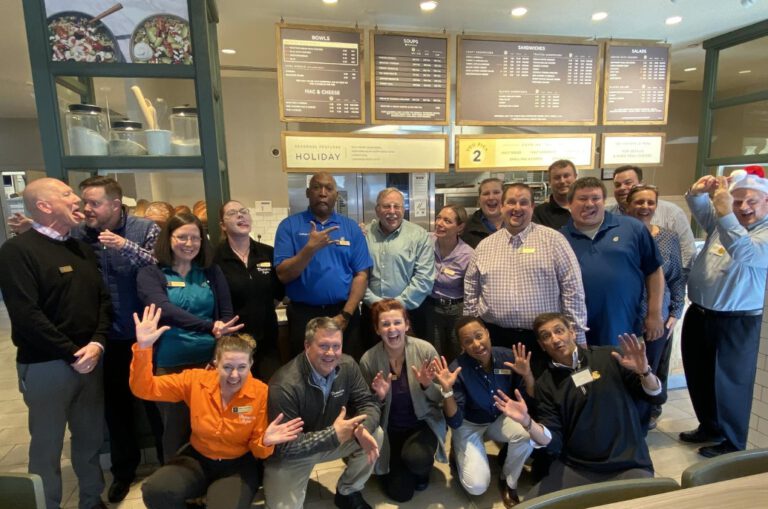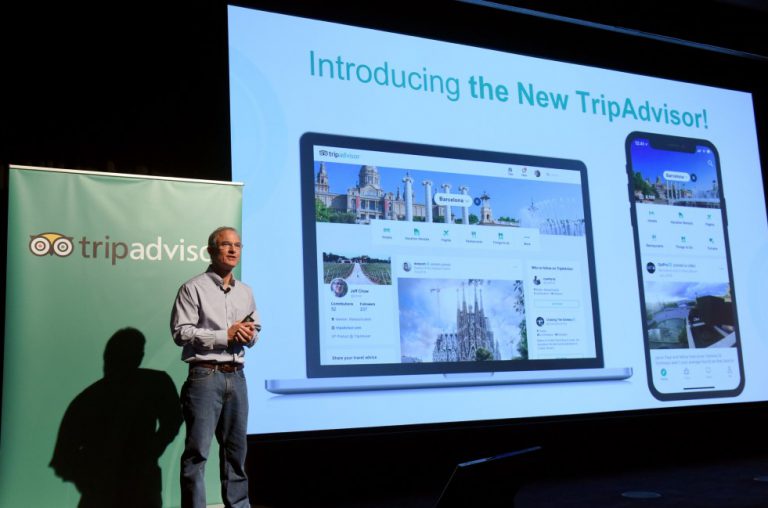Yelp’s Pitfalls and What They Need to Get Back on Track?
Technological advances over the past decade have led to the proliferation of consumer review websites such as Yelp.com, where consumers can share experiences about product quality. These reviews provide consumers with information about experience goods, which have quality that is observed only after consumption. With the click of a button, one can now acquire information from countless other consumers about products ranging from restaurants to movies to physicians. This paper provides empirical evidence on the impact of consumer reviews in the restaurant industry
It was the first big success story in the early days of user-generated reviews, and the company enjoyed rapid growth in those early days. But it hasn’t been so easy for Yelp lately with increased competition and a stagnant business model. And you don’t go from tech darling to tech giant without a few bad reviews.
The Beginning of Yelp

Yelp was founded in July of 2004 by former PayPal employees Jeremy Stoppelman and Russel Simmons to compile word-of-mouth suggestions for local businesses and services. Stoppelman And Simmons originally decided on the name Yokel, but that domain had already been taken. So at the advice of a colleague, they went with Yelp.
The duo launched the first iteration of their site in October of 2004, which was basically a huge email listserv. Seems antiquated, but remember, this was almost three years before the launch of the first iPhone. Mark Mahaney, RBC Capital Markets Lead Tech Analyst said that “Yelp was built almost community by community. They would send out an organizer, almost like a grassroots local organizer, to host events in towns and cities for local businesses, letting them know about Yelp, how consumers could and would use Yelp, and how local businesses could increase their business by advertising on Yelp.”
By 2009, Yelp became so popular that Google offered the owners $550 million for the company. Yahoo! countered that offer with a $1 billion check, and Yelp refused both.
Instead, Yelp went public in 2012 and stocks surged on the first day of trading. “We want to bring Yelp to the world. We want to manage this mobile transition that’s happening. We want to play a big part of that. And we want to be the broadest and deepest content’s source for local information. Really, the Amazon of local, when we think about it.” – said CEO of Yelp.
At the time it had 22 million reviews on its site and 61 million unique monthly visitors. In 2018, it had 177 million reviews and 164 million average unique monthly visitors, including the mobile site, desktop site and mobile app. Originally, Yelp was sort of the only game in town when it came to reviews. And this goes back to the initial question of why were investors so gung ho on Yelp originally? They were the only game in town at first, when it came to reviewing a local business.
Amid all of Yelp success, the company claimed that once suitor Google was favoring its own content in search results and that Google was scraping data from Yelp for its own Google Places service, which spurred antitrust investigations. And Yelp released a pretty convincing presentation to demonstrate how Google was hurting its business.
Yelp’s Features for Businesses

Yelp combines traditional business listings in a directory like Yellow Pages with social elements. Customers can leave feedback about their experience with a business with two things. It informs prospective customers about what they can expect and it keeps the standards high, or forces them to improve them to prevent negative feedback. At 5 years old, Yelp was offered by Google and Yahoo for $ 550 million and $ 1 billion, respectively. Rejecting the invitation to develop at a rapid pace, Yelp “fell asleep on victory” when many years of continuous decline and faced a dark future.
Yelp.com is a website where consumers can leave reviews for restaurants and other businesses. Yelp was founded in 2004, and is based in San Francisco. The company officially launched its website in all major west coast cities (and select other cities) in August of 2005, which includes Seattle. It currently contains over 10 million business reviews, and receives approximately 40 million unique visitors (identified by IP address) per month. Yelp is part of a larger crowdsourcing movement that has developed over the past decade, where the production of product reviews, software, and encyclopedias, among others are outsourced to large groups of anonymous volunteers rather than paid employees.
The appendix shows trends in search volumes for Yelp, Trip Advisor, and Angie’s List, which underscores the growth of the consumer review phenomenon. On Yelp, people can read restaurant reviews and people can write restaurant reviews. In order to write a review, a user must obtain a free account with Yelp, which requires registering a valid email address. The users can then rate any restaurant (from 1-5 stars), and enter a text review. Once a review is written, anyone (with or without an account) can access the website for free and read the review. Readers will come across reviews within the context of a restaurant search, where the reader is trying to learn about the quality of different restaurants.
Readers can look for restaurants that exceed a specified average rating (say 3.5 stars). Readers can also search within a food category or location. A reader can click on an individual restaurant, which will bring up more details about the restaurant. As shown in Figure 2, the reader will then be able to read individual reviews, as well as see qualitative information about the restaurants features (location, whether it takes credit cards, etc.). Users may choose to submit reviews for many reasons. Yelp provides direct incentives for reviewers, such as having occasional parties for people who have submitted a sufficiently large number of reviews. Wang (2010) looks across different reviewing systems (including Yelp) to analyze the social incentives for people who decide to submit a review.
Yelp added the ability for business owners to respond to reviews in 2008 Businesses can respond privately by messaging the reviewer or publicly on their profile page. In some cases, Yelp users that had a bad experience have updated their reviews more favorably due to the businesses’ efforts to resolve their complaints. In some other cases, disputes between reviewers and business owners have led to harassment and physical altercations. The system has led to criticisms that business owners can bribe reviewers with free food or discounts to increase their rating, though Yelp users say this rarely occurs. A business owner can “claim” a profile, which allows them to respond to reviews and see traffic reports. Businesses can also offer discounts to Yelp users that visit often using a Yelp “check in” feature. In 2014, Yelp released an app for business owners to respond to reviews and manage their profiles from a mobile device Business owners can also flag a review to be removed, if the review violates Yelp’s content guidelines.
Yelp’s revenues primarily come from selling ads and sponsored listings to small businesses. Advertisers can pay to have their listing appear at the top of search results, or feature ads on the pages of their competitors. As of 2016, advertising revenue was growing at a rate of 30% year over year. Yelp will only allow businesses with at least a three-star rating to sign up for advertising. Originally a sponsored “favorite review” could place a positive review above negative ones, but Yelp stopped offering this option in 2010 in an effort to deter the valid criticism that advertisers were able to obtain a more positive review appearance in exchange for pay.
On Jun 5, 2020, Yelp launched a new tool to allow businesses on the platform to identify themselves as black-owned. Customers are now able to search the Yelp app for black-owned businesses they want to support.
Yelp Have to Face Difficult Both inside and Out
Yelp was dealing with some internal problems as well. Business owners started noticing suspicious reviews According to a study done at Harvard, which included every Yelp review for restaurants in the Boston metropolitan area between 2004 and 2012, minus the 1 percent that violated Yelp’s terms of service, 16 percent of reviews were flagged as fake. Rival business owners would write negative reviews to lower their competitions overall rating and write positive reviews on their own businesses. Yelp says it deals with these fake or extreme reviews by filtering them out. Every Yelp review is automatically evaluated by Yelp’s recommendation software based on quality, reliability and user activity on Yelp. We try not to highlight reviews written by users we don’t know much about or those that might be fakes or unhelpful rants or raves. And since the early days of Yelp, some business owners have not been too keen with how Yelp makes its money. A majority of its revenue comes from advertising.
So this is no different than, say, what Facebook or Google does, where they’re all on the same hunt for digital ad dollars. Yelp’s niche in this is that if you’re going and looking for a small business or restaurant, those restaurants can advertise right up there against your search on the site and therefore you can make money that way.
An upcoming documentary that was announced back in 2015 interviewed local business owners who claimed to have received shady phone calls from Yelp sales representatives.
These reps reportedly offered to move bad reviews to a lower position on the businesses Yelp page in exchange for an advertising package and threatened to dock the page if they didn’t advertise. The Federal Trade Commission looked into these allegations but found no cause for charges against Yelp. In a blog post, Yelp Senior Vice President said that “There’s no relationship between advertising on Yelp and the reviews that are recommended. Uh, That’s just no way to run a business, and it’s not how we do things here at Yelp.”
But documentary director Kaylie Millikin was not convinced, not even by the FTC. “I have spoken with a lot of the lead attorneys in cases brought up against Yelp and the FTC never went to them for the documentation that those attorneys have, the evidence that those attorneys have.”
To this day, there is a divide between business owners who love Yelp and those who resent it. One business owner who asked to remain anonymous for fear of retaliation from Yelp hasn’t had the best experience using the service. Other businesses, on the other hand, have found great success in Yelp’s advertising program.
Yelps Stock Peaks and Then Fell

Despite these allegations and the encroaching tech superpower’s like Google and Facebook and Instagram, Yelp’s stock continued to climb. It peaked on March of 2014 at over $100 a share due to positive Wall Street analysis. But it hasn’t been able to get back there since.
Yelp has had a difficult time monetizing the business of recommendations into a growthier tech company that can compete with the biggest tech companies out there like Facebook and Google. Investors were chomping at the bit to see Yelp become an advertising powerhouse, but it fell short of many investors expectations. And the products that Google and Facebook had been creating to compete with Yelp started looking better and better in the eyes of the investors. Google has increasingly introduced more and more local information, local services information, restaurant reviews. They’ve kind of, that’s the, that was the reason for existence of Yelp and Google increasingly starting encroaching on that. Google took its services and prioritized them on searches, driving less and less people to Yelp site. This self-favoritism was a setback for Yelp, but some analysts say Yelp has not been innovating at the pace it should be.
Yelp, in a way, was too slow to innovate. Some of these things that they have rolled out now, so they called a Request a Quote where you can actually go on the site and request a quote, they should have been rolling that out several years ago. This company was good on innovation, but not great on innovation. Slowness is what really created the opportunity for other companies. A recent wakeup call to Yelp comes in the form of an activist investor. These investors buy up large sums of a company’s stock and use it as leverage to get the company to change its strategy.
SQN has been an investor in Yelp for more than four years and they decided to go public and in essence become an activist shareholder. SQN released a 112 page document outlining Yelp’s pitfalls and what it needed to do to get back on track. And if it doesn’t comply, SQN is going to shake things up, starting with Yelp’s board of directors. Yelp responded fairly quickly. The first thing they did was that they actively replaced three board members. They also reported a very strong quarter. But Yelp is trying to diversify and gain some momentum.
Yelp as a company is going through a couple of transitions. From a consumer side, it’s going through a transition of being purely an information or a research site to one that’s more transactions oriented. If you could actually go to the site, see those reviews and make a reservation at one of those sushi restaurants or order delivery through a partnership that Yelp has developed with Grub Hub. So it’s moved from being a purely information site to being more of a transaction site.
And Ask for Yelp’s Future?

Want to escape the future not bright ahead, Yelp has determined that he must change from the root, they must escape from the image of a “review page” normally. That’s why the “reservation” and “ordering” feature was born, after searching and reading reviews, customers can quickly book themselves an appointment or use delivery services through the Partners like Grub hub.
But it seems that those changes are too late when the whole market orders and reservations have long become a “red sea” with giants like Uber, Seamless, Booking, Agoda, etc. Can Yelp survive as an independent company? At this stage, It is said that Yelp is probably too small to survive as an independent company. I would not be surprised at all if they sell to a larger competitor. There’s always a chance for companies to catch up, and that’s what Yelp is finding out now.
You Might Also Like:









